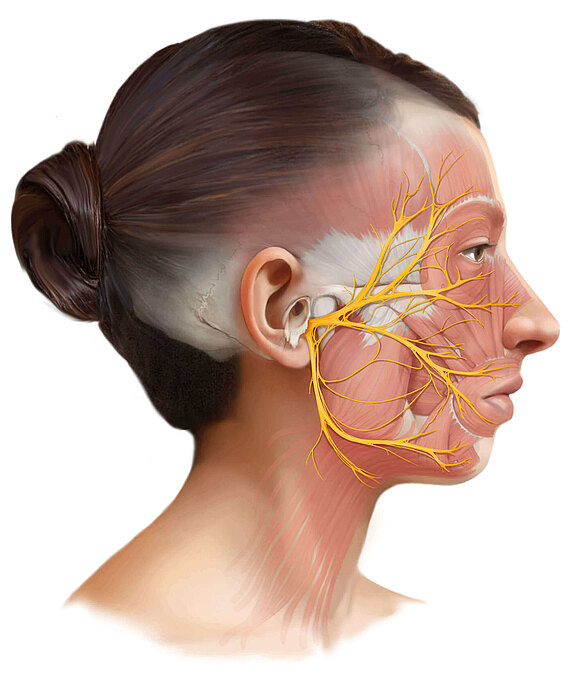The facial nerve is responsible for facial expressions. It is also involved in the secretion of tears and saliva and the perception of taste. Its many tasks and the central position of its peripheral course in the face make it one of the most fascinating nerves of the human body. It is the only nerve that enables the individual to communicate emotions directly to his environment. Facial expression is dynamically determined by a complex neurologic and psychomotor interaction, which transforms feelings into facial expressions. The facial nerve connects the brain with at least 21 mimetic muscles in the face.
"A picture says more than a thousand words." This is even more applicable to facial expressions as part of human body language since they are more than just "a picture". They change every second and say so much about each individual. Facial expression is so variable and individually unique and reacts spontaneously in fractions of second. As the strongest non-verbal communication instrument, facial expressions are an honest mirror of inner emotions and help classify what has been said. Depending on the facial expression, an identical sentence is interpreted very differently by another person. Even without verbal interaction, a lot can be read from the facial expressions. The impulses from the brain are transmitted by the facial nerve, which plays a central role in the everyday communication. If it is intact, it is the non-verbal channel of emotions. If it is damaged, however, not only the exterior is distorted, but so is the emotional communication. Since man lives with his fellow human beings in a constant verbal and non-verbal exchange (according to Paul Watzlawick "One cannot not communicate!"), the facial nerve plays an essential role.
On the following pages, you can learn more about the anatomy of the facial nerve and its natural functions (physiology). Please explore the pathological conditions and causes of reduced function or complete failure of this important cranial nerve. You will gain further insight into the regenerative abilities of a peripheral nerve and the prerequisites for nerve regeneration.
